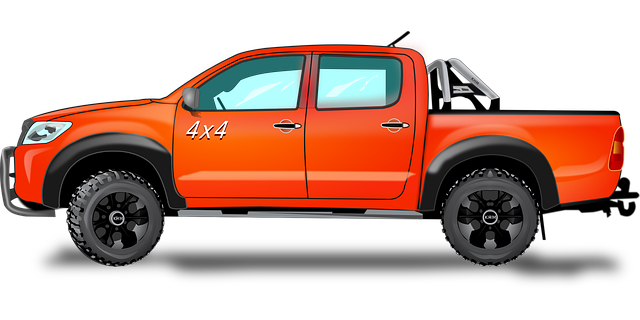Recovery lines, critical components in truck steering systems, are essential for the safety and efficiency of commercial fleets like Brownsville's. Skilled technicians maintain these lines through regular inspections and timely replacements, preventing accidents and enhancing control during emergencies. The Brownsville Fleet has optimized its operations by implementing efficient recovery line practices, reducing downtime, managing parts effectively, and prioritizing speed and precision in repairs, making it a model for other industries aiming to revolutionize truck steering repair. Maintaining high-quality tires, structured maintenance schedules, driver training, and partnerships with reputable vendors are key strategies for ensuring safe and efficient fleet operations.
“Unleashing Improved Truck Steering: The Power of Recovery Lines
This comprehensive guide explores recovery lines, a pivotal component in truck steering systems. We begin with a foundational understanding of these lines, delving into their basic overview and role in enhancing vehicle stability and control.
A case study on the Brownsville Fleet showcases real-world success stories of efficient recovery line implementation, highlighting their impact on fleet management. We also dissect the benefits and challenges associated with adoption while offering best practices for maintenance, ensuring optimal performance in commercial fleets, particularly in demanding settings like the Brownsville fleet.”
- Understanding Recovery Lines: A Basic Overview
- The Role of Recovery Lines in Truck Steering Repair
- Brownsville Fleet: A Case Study on Efficient Recovery Line Implementation
- Benefits and Challenges of Using Recovery Lines
- Best Practices for Maintaining Recovery Lines in Commercial Fleets
Understanding Recovery Lines: A Basic Overview

Recovery lines, a cornerstone in the automotive industry, particularly for commercial fleets like the Brownsville fleet, play a vital role in truck steering systems. These specialized components are designed to ensure safe and efficient vehicle control, especially during unexpected situations or emergencies. By providing supplementary support, recovery lines enable the primary steering mechanisms to function optimally, minimizing the risk of accidents and maximizing driver control.
In the context of truck steering repair, understanding the intricacies of recovery lines is essential. For instance, when a Brownsville fleet vehicle experiences a steering issue, technicians need to inspect these lines for any signs of damage or wear. Regular maintenance and prompt repairs are crucial to prevent more severe problems. The expertise in repairing or replacing recovery lines guarantees that trucks maintain their steering precision, ensuring the safety of drivers and other road users alike.
The Role of Recovery Lines in Truck Steering Repair

Recovery lines play a pivotal role in the intricate system of truck steering repair, especially for those operating in demanding environments like Brownsville’s bustling fleet scene. These specialized components are designed to mitigate the effects of constant wear and tear, ensuring smooth and precise handling for heavy-duty vehicles. By providing a safety net against sudden failures, recovery lines significantly reduce the risk of accidents and enhance driver control.
For truck steering repair in Brownsville, maintaining robust recovery lines is paramount. Skilled technicians recognize that these lines not only support the steering system but also act as a failsafe mechanism during unexpected events. Regular inspections and timely replacements are essential practices to safeguard both vehicles and drivers, ensuring optimal performance on the roads of Brownsville’s dynamic fleet operations.
Brownsville Fleet: A Case Study on Efficient Recovery Line Implementation

The Brownsville Fleet, a renowned case study in logistics optimization, highlights the transformative power of efficient recovery line implementation. This fleet, specializing in truck steering repair, faced challenges with traditional maintenance processes, marked by lengthy downtime and inefficient parts management. To address these issues, they adopted a structured approach to designing their recovery lines.
By prioritizing workflow streamlining, the Brownsville Fleet optimized their recovery line for speed and precision. They integrated advanced diagnostic tools, enabling technicians to quickly identify issues, thus reducing repair time significantly. This case study exemplifies how strategic implementation of recovery lines in truck steering repair can lead to increased operational efficiency, cost reduction, and enhanced customer satisfaction, making it a valuable reference for industries seeking to revolutionize their maintenance practices.
Benefits and Challenges of Using Recovery Lines

Recovery lines offer several significant advantages for vehicle owners, particularly those with larger fleets like the Brownsville truck fleet. One of the key benefits is enhanced safety. These lines ensure that vehicles remain steerer and responsive during recovery operations, minimizing the risk of accidents or further damage to the vehicle and its surroundings. This is especially crucial in complex situations where precise control is needed.
Despite their advantages, there are challenges associated with using recovery lines. Maintenance and upkeep can be demanding, requiring regular inspections and replacements to maintain optimal performance. Furthermore, proper installation is essential for safety, adding a layer of complexity that necessitates skilled technicians, such as those available at Brownsville fleet’s truck steering repair services, to ensure effectiveness and avoid potential hazards during recovery processes.
Best Practices for Maintaining Recovery Lines in Commercial Fleets

Maintaining recovery lines, or spare tire systems, is paramount for commercial fleets to ensure safe and efficient operations. Regular inspections are key; checking for wear, tear, and proper inflation pressure at every service interval. Using high-quality tires and ensuring they meet industry standards guarantees optimal performance and longevity. For Brownsville fleet truck steering repair needs, it’s crucial to partner with reputable vendors who can provide both replacement parts and expert advice on the latest maintenance techniques.
Implementing a structured maintenance schedule, including timely rotations and replacements, is essential for preventing sudden breakdowns. Drivers should be trained to recognize signs of tire distress, such as unusual noises or vibrations, and report them promptly. Additionally, keeping detailed records of maintenance activities and tire replacements aids in identifying patterns and areas requiring extra attention, ultimately minimizing downtime and enhancing road safety.
Recovery lines play a pivotal role in enhancing the performance and safety of truck steering systems, as evidenced by the successful implementation at Brownsville Fleet. By understanding their function and adopting best practices for maintenance, commercial fleets can mitigate challenges and capitalize on the numerous benefits, including improved vehicle handling, reduced downtime, and cost savings. Integrating recovery lines into regular fleet maintenance routines is a strategic move that promises to revolutionize truck steering repair, making it an essential consideration for any forward-thinking operation.



